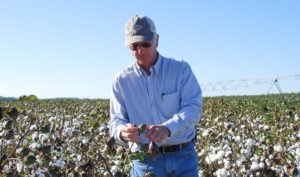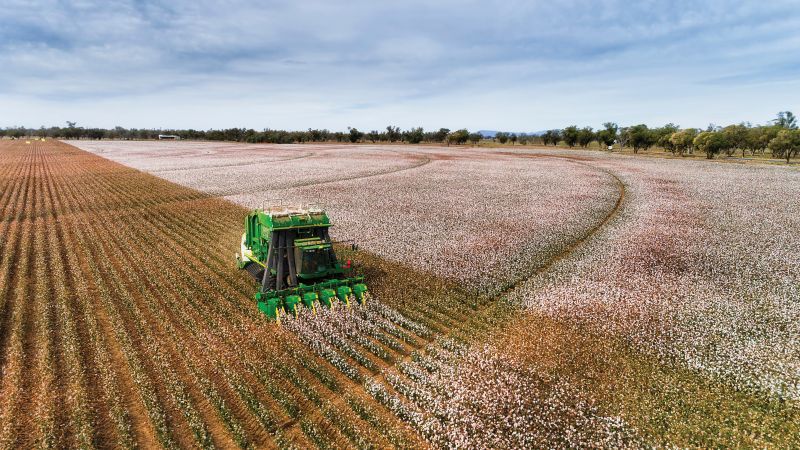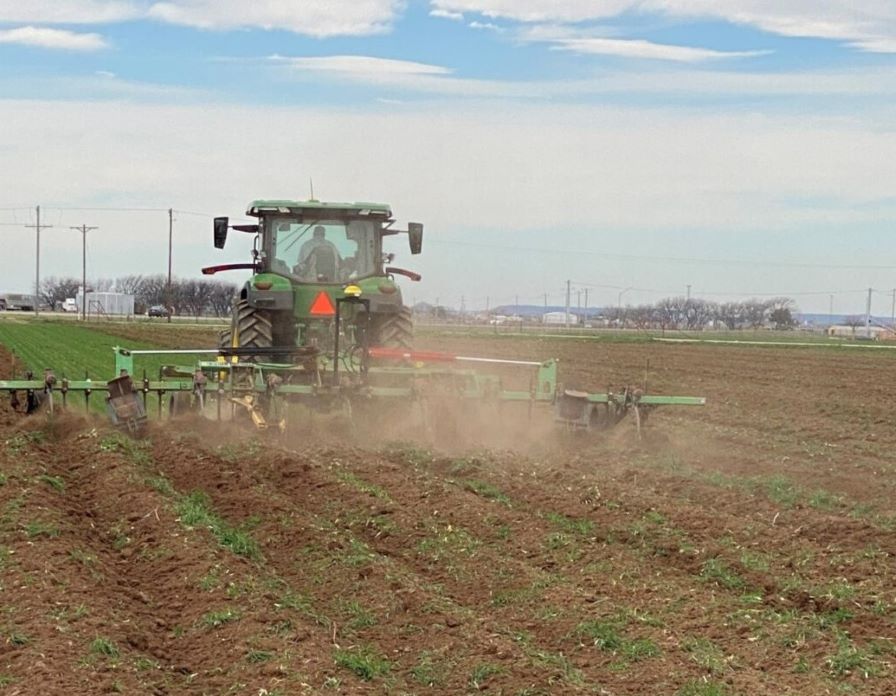Taking Control of Nematodes
From Cotton Grower Magazine – May/June 2017
Any number of factors can drive a cotton producer’s decisions from year to year. For Johnny Cochran, one of those factors has remained consistent on his Sylvester, GA cotton and peanut operation: Nematodes.
Located amid the picturesque pine forests of South Georgia, Cochran’s operation is a pleasant place. His wife prunes a lush rose garden not far from his farm shop. At harvest time, his fields are flush with showy cotton.
But don’t be fooled by the aesthetics. In addition to its beauty, South Georgia also has a reputation for harboring yield-robbing pests like resistant pigweed and, most notably to Cochran, nematodes.
The microbial pests impact any number of Cochran’s in-season decisions. They’ll even dictate what crop he should plant in a given field.
“Cotton root knot nematodes, on these sandier soils we have, have been our number one problem,” Cochran says. Like countless cotton producers across the country, Cochran was forced to re-evaluate his crop protection program when Temik was phased out of use in the cotton industry due to Environmental Protection Agency regulation.
In the year immediately following the loss of the aldicarb product, Cochran knew he had a serious problem on his hands.
“We would see nematode numbers just going up, with our soil sampling, so we knew we were going to have to do something,” he says. “We were seeing hotspots develop. That first year we planted a small plot of DP 1558NR B2RF, and we saw a significant reduction in root knot nematode population. So I knew then that this had a lot of potential for – not replacing aldicarb – but helping deal with the loss of aldicarb.”
As a participant in the New Product Evaluator program, Cochran is able to get a first look at pre-commercial Deltapine varieties. In 2014, that meant he was able to plant what would eventually be named DP 1558NR B2RF on his own farm, one of the earliest nematode resistant varieties from Deltapine. He soil sampled for nematode populations the year prior to planting the variety, and then again after he had harvested it.
“We saw drastic reductions in nematodes,” he says. “So we know that the technology works.”
Still, the loss of Temik caused significant challenges.
Like many other cotton producers across the Cotton Belt, it’s hard to overstate how heavily Cochran relied on the nematicide to help control an often rampant root knot nematode population. He says he used the aldicarb product in both his cotton and peanut fields, year in and year out. “We were keeping them suppressed with Temik,” Cochran says.
Without that tool in his toolbox, he was forced to get creative in how he dealt with the pest. Cochran developed a crop rotation system that helped keep the nematodes in check.
“We grow about 2/3 of our acreage in cotton and 1/3 in peanuts,” he says. “And we’re on a two year rotation with our peanuts. That’s where the nematode-tolerant varieties fit into my program – in the second year of my cotton rotation, we try to put in a variety that will withstand the nematode pressure.
“The first year a particular field is in cotton, we expect the nematodes will be suppressed from the peanut rotation the year prior,” Cochran says. “So we’ll grow one year of whatever cotton variety we want to plant there, regardless of the nematode resistance. Then the second year is when we try to put in a nematode tolerant cotton variety in the field.”
Of course, a key to that system working was the development of high-yielding varieties that also happened to feature nematode resistance.
Raising the Yield Bar
Mercifully, a staple of Deltapine variety advancement, the company’s representatives say, is that the new varieties must yield on par with, or better than, their existing offerings. So the nematode resistant varieties the company developed also featured improvements in yield potential.
“These nematode varieties were moving along in the research and they were coming up with varieties that were nematode resistant that would still yield and grade,” Cochran says. “So we opted to use these nematode varieties to help control our problem.”
Much of Cochran’s farm is dryland acreage, so he is always on the lookout for a variety that will yield well in occasionally stressful irrigation conditions. When planting dryland cotton behind peanuts, a scenario where he doesn’t expect to encounter high nematode populations, he turns to DP 1555 B2RF – “a good high yielding variety” he says. The result has been that Cochran has had to raise his expectations for what he could accomplish on dryland.
“I’ve been growing cotton for 25 or 30 years,” he says. “I can remember when you wanted to average two bales with irrigated cotton – you thought you were burning the barn down with that. We now look for three bales on irrigated land and two bales on dryland.”
The fickle nature of Georgia rainfall from year to year has made it hard for Cochran to gauge what a normal crop should be in recent years.
“2011, 2012 and 2013 really spoiled us, where we had some really good growing seasons,” Cochran says. “We were yielding three bales on irrigated and three bales on dryland, and that sort of changed our yield goals there.”
Of course, conditions aren’t always ideal. Cochran says 2016, which featured a long dry spell, forced him to once again re-evaluate what a successful dryland yield number should be.
Ground Zero for Resistance
Glyphosate resistance was first discovered in Cochran’s corner of the Cotton Belt, and pigweeds still pose a serious threat in this area. But just as he’s done with nematodes, Cochran has developed a successful strategy for dealing with resistance weeds.
“We’ve been able to maintain our Roundup-based program,” he says. “We do a lot of hand pulling. As we go through the field, we try to reduce our seed bank from Palmer amaranth. That’s been the biggest thing to help us maintain our system. Any time we see a Palmer amaranth weed, we stop what we’re doing, no matter what it is, and go out there and pull them. Unless there’s a large population out there in a given area, then we’ll come back with an ATV and haul the weeds out.”










